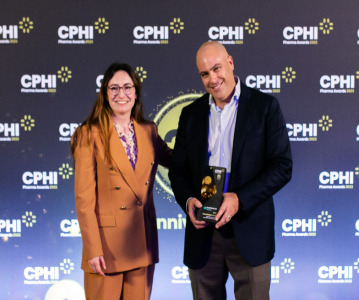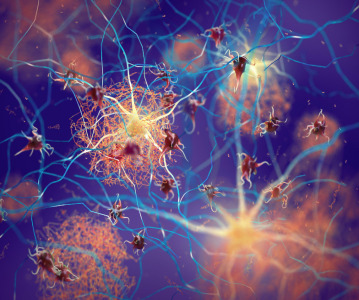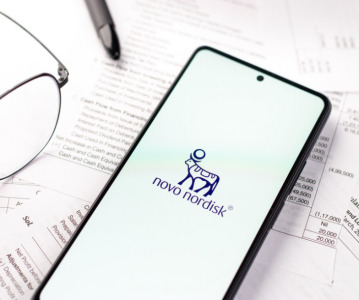Accepting novel excipients for innovative drug development

With the rapid development and manufacturing of new drugs and therapeutics being pushed through the pipeline, excipient manufacturers are navigating a challenging landscape to meet the demand for new and novel excipients.
In this article, we investigate key factors driving the requirement for new chemical entities and excipients, the struggle to meet current demand, and challenges when seeking regulatory approval. We will also assess the importance in considering excipient development and manufacturing throughout the drug development pipeline.
Defining excipients: new or novel?
The US FDA defines novel excipients as those that have not been previously used in FDA-approved products and no established use in foods. New excipients, however, are defined as those ‘not fully qualified by existing safety data with respect to the currently proposed level of exposure, duration of exposure, or route of administration.’ In other words, new excipients can encompass those that exist in FDA-approved products but can be classed as new if it is to be used in a product with a different route of administration than the approved product. Novel excipients are more specific in that they do not appear in any FDA-approved product. As such, not all new excipients are novel excipients. In contrast, the International Pharmaceutical Excipient Council Europe (IPEC Europe) refers to novel as new excipients [i]. Herein, we discuss the need for novel excipients, or those that have not appeared in any FDA-approved product [ii].
The growing need for novel excipients
With the outbreak of SARS-CoV-2 and the COVID-19 pandemic, a global effort to develop, approve, and distribute a vaccine pushed the pharmaceutical industry to uncover both new APIs and novel excipients. The two mRNA vaccines developed by Pfizer/BioNTech and Moderna each contained two novel excipients: a cationic lipid and a PEGylated cationic lipid. However, this effort has yet to translate to other products, with most new drug products containing new APIs without novel excipients. The few products that contain novel excipients generally do not contain new APIs.
In general, excipients are used to overcome API limitations during the drug development and manufacturing process. These include issues such as low solubility, permeability, and stability, among others [ii]. The development of an excipient should, in theory, be treated as the infrastructure of the pharmaceutical sector, with focused research on novel excipient discovery and development [iii]. Ideally, an excipient should be inert and non-reactive, however there have been recent reports of adverse reactions to materials in a drug product aside from the API [iv].
Such reports compound upon existing fears when submitting a new drug product for approval: since the excipient is not decoupled from the API when assessing a drug candidate’s safety, risk-averse pharmaceutical companies are less willing to experiment with novel excipients when developing new treatments [v]. This potentially prevents the development of more effective formulations with efficient modes of administration, beyond those that are currently available and approved by the market. A 2019 survey conducted by the United States Pharmacopeia (USP) demonstrated that when limited to recognized excipients, 84% of respondents experienced product limitations, 64% experienced product delays of 1–5 years, and a further 28% experienced development discontinuation altogether.
‘The issue is not one of developing new or novel excipients. The issue is one of acceptance by pharmaceutical companies once commercially available for drug product development and manufacture. Formulators often use the excipients they know well to avoid any issues, real or imagined,’
Anita Vasilevska, Technical Marketing Manager, IMCD Group (Rotterdam, Netherlands) describes the reluctance within the pharmaceutical industry.
Evidently, the research and development of novel excipients plays a major role in the formulation of drug candidates, focusing on goals that concern ease of administration, targeted delivery, and complete availability [vi]. With increasingly complex drug substances being pushed through the development pipeline, there is a growing need for solutions to formulation challenges. A concentrated effort towards the development of novel excipients has the potential to have a significant impact on drug development and the types of treatments available to patients, especially those with rare and complex conditions [v].
Regulatory approval of excipients
IPEC Europe states that “[al]though excipient qualification does not directly involve regulatory authorities, regulators set many of the conditions that must be satisfied for users to incorporate excipients into medicinal products.” This summarises the biggest challenge for pharmaceutical companies regarding regulatory approval for excipients – the fact that the process is not uncoupled from the approval of the therapeutic as a whole [i]. As mentioned, this makes it difficult to persuade pharmaceutical companies from pursuing novel excipient use in therapeutic development, potentially disregarding better formulations or easier modes of administration and stalling the development of new therapeutics. Currently, the most common case for using novel excipients in a drug’s development pipeline is when all other formulations have failed [ii].
‘Key factors restricting novel excipient development, really, are [that] it’s a high-risk business… for both the excipient supplier and the pharmaceutical user even after all the design safety testing and assurance. There remains the risk that during the marketing authorization application that it still gets a lot more questions because it’s new and novel and could get rejected, or requests for a lot more information… That’s the one thing you don’t want – delays to your marketing authorization… It’s a high business risk,’
Iain Moore of IPEC Europe, explains the aversion towards the use of novel excipients in drug products, emphasizing this reluctance as one stemming from a business standpoint rather than a health and safety issue. Any delays to the approval of a drug product may bear significant costs and time delays that, sometimes, may be avoided with the use of a known and approved excipient.
For novel excipients, there are a number of safety assessments that must be demonstrated in order for a pharmaceutical to receive approval from the US and European regulatory authorities. The criteria with which the therapeutic is assessed may differ depending on the degree of novelty of the excipient. A completely new chemical entity will be required to present more safety data than a co-processed excipient where individual excipients that were previously used in an approved medicinal product are used together [i].
Different regulatory authorities should provide their own guidance on safety testing for novel excipients – the US FDA has its own guidance for safety testing of novel excipients, while IPEC Americas has published ‘A New Approach to the Safety Assessment of Pharmaceutical Excipients’. The latter forms the basis for the United States Pharmacopeia General Chapter on excipient evaluation. In a similar vein, IPEC Europe’s Safety Committee has published ‘The Proposed Guidelines for the Safety Evaluation of New Excipients.’ Depending on the intended market, manufacturers of novel excipients should provide the appropriate safety data to satisfy this guidance [i].
‘While excipients generally have no physiological effect on their own, they contribute significantly to proper drug product administration, regardless of dosage form type or route of administration. Regrettably, excipients are overshadowed even though [they are] required for all drug products: solids, liquids, topicals, and injectable,.’
Anita emphasizes the important role excipients play in the drug product as a whole. There thus exists a fine balance between investing in novel excipients in the drug development pipeline and delivering the final drug product within an agreeable timeline and cost. Both Iain and Anita give a timeline of 15 or so years for the development, incorporation, and regulatory submission and approval of a novel excipient. Yet, the COVID-19 pandemic has demonstrated that an accelerated timeline can be achieved. Anita explains how such excipients have been turned around in less than 2 years:
‘Recently, the ground-breaking mRNA vaccines, which contain novel excipients (a cationic lipid and a PEGylated cationic lipid) have demonstrated the need for novel excipients. If not for the novel excipients, the world would not have benefitted from a life-changing vaccine. It is exemplary but unfortunate that it took the recent global health crisis to accelerate development of new therapies and excipients that would otherwise have been unrealised.’
Iain agrees that the acceleration of excipient development for the pandemic only came at the behest of a global health crisis, and the need for parallel tracking rather than linear, as was demonstrated with the COVID-19 vaccine effort:
‘As we’ve seen with the COVID-19 vaccines and everything there, the unmet patient need was extreme and very acute. So parallel tracking was the only way to actually do all the work, have it reviewed and assessed [rapidly which] required a lot more resources from the authorities as well. But that is [now] a model for how we can accelerate and improve the introduction of novel excipients.’
But the question remains – how can pharmaceutical manufacturers be persuaded to incorporate novel excipients into their development pipeline (outside of a crisis), and how can a targeted focus on the actual development and manufacturing of novel excipients be encouraged?
The Novel Excipient Review Pilot Program
The Center for Drug Evaluation and Research, a part of the US FDA, announced in September 2021 the launch of a voluntary Novel Excipient Review Pilot Program. The goal of the program is to “allow excipient manufacturers to obtain FDA review of certain novel excipients prior to their use in drug formulations” [vii]. In other words, the programs hopes to encourage the manufacturing and use of novel excipients for new drug formulations.
The program will be divided into two stages for proposals. The initial proposal stage asks excipient manufacturers to submit a summary of the novel excipient, the proposed use, and the public health or drug development need for the excipient. The summary may include initial safety data for support. From the initial proposal stage, four will be selected to progress to the second stage. Factors considered by the FDA during the selection process include the potential public health benefit of the excipient, the ability and likelihood of a manufacturer’s ability to submit a complete package on time, and the overall potential of the excipient. The last factor includes meaningfully improving a therapeutic’s pharmacokinetic characteristics with the potential for novel drug development [viii].
Such a program will inevitably have a big impact for excipient manufacturers, namely in encouraging the development of novel excipients and their submission for approval. With the potential for receiving regulatory approval for an excipient ahead of its use in a therapeutic, manufacturers will be incentivised to take the risk on the development of novel drug formulations, modes of administration, and overcome issues relating to solubility and permeability among others.
‘I see this as a hugely important step in the development of novel excipients… I think the FDA are very enlightened…yes it’s a pilot program and it’s very limited but I’m not so much interested in that…It’s the fact the FDA decided to do this. They are telling us that they recognise there could be a problem and they’re being innovative within the constraints of the regulations to try and find if there’s a solution,”
Iain praises the US FDA for taking feedback from a number of surveys conducted that demonstrated a number of barriers towards the development of excipients and moving forward with constructive solutions, though limited in scope. Anita agrees:
‘The program’s benefits are significant. For the first time, pharmaceutical companies will have greater confidence in using novel excipients without fear that the drug product approval process will be overcomplicated. The independent review process will assist in alleviating some of the apprehension associated with novel ingredients.’
Anita also explains how such a program not only benefits pharmaceutical companies, but also patients themselves:
‘Given past reluctance to novel excipient use, pharmaceutical companies relied on ‘tried-and-tested’ excipients, missing an opportunity to use novel excipients for the development of best-in-class medicines that would lead to improved patient compliance and successful therapies.’
More programs, such as the US FDA excipient pilot program, may help manufacturers and pharmaceutical companies overcome their aversion towards the use of novel excipients in drug formulations, fostering the innovation of a new world of solutions to common issues in drug development. The success of the US FDA pilot program is yet to be seen but it’s safe to say manufacturers can be a little more hopeful in the shift in focus towards novel excipients.
Interested in learning more about excipient development and the excipients market? Listen to our latest podcast episode on the importance of novel excipients or register for our webinar on why the excipients industry must embrace the 'new normal' with regards to auditing, supply chain, and regulatory processes to ensure future growth.
References
[i] www.ipec-europe.org/uploads/publications/20201026-eq-guide-revision-final-1615800052.pdf
[ii] www.link.springer.com/content/pdf/10.1007/s11095-021-03157-y.pdf
[iii] www.cphi-online.com/p-excipients-are-essential-to-the-formulation-of-file129526.html
[iv] www.nps.org.au/australian-prescriber/articles/pharmaceutical-excipients-where-do-we-begin#article
[v] www.qualitymatters.usp.org/novel-excipients-new-hope-therapeutic-innovations
[vi] www.sciencedirect.com/science/article/pii/S2095177919307749
[vii] www.fda.gov/drugs/development-approval-process-drugs/novel-excipient-review-pilot-program
Related News
-
News Pharmapack Awards 2024 Patient-Centric Design Award Winner – Dr Ferrer BioPharma
The 2024 Pharmapack Awards celebrated the best in innovation and design for the pharmaceutical packaging and drug delivery industry on January 24, 2024. -
News Pharmapack 2024 - From the Floor
Paris once again welcomes Europe’s leading trade show in pharmaceutical packaging and drug delivery innovation. Join our content team as Pharmapack 2024 opens its doors to leading experts and innovators in pharmaceutical packaging and drug delive... -
News On Track at Pharmapack 2024 - The Track Sponsor interview: BD Pharmaceuticals
January 2024 brings both a new year and Europe’s leading packaging and drug delivery event. Bringing the world’s experts in pharmaceutical packaging together in Paris, France, Pharmapack 2024 brings exciting opportunities to learn and colla... -
News CPHI Pharma Awards 2023 – API Development and Innovation Winners: Snapdragon Chemistry, a Cambrex Company
After another year of impressive nominations for the CPHI Pharma Awards our winners were announced at CPHI Barcelona in October. In this series of interviews, we speak to the teams behind the award-winning projects, concepts, and technologies. -
News PharmaKure gains authorisation for next stage testing on Alzheimer's treatment
Clinical stage pharmaceutical company PharmaKure gains permission from UK authorities to enter into further testing for PK051 for the treatment of patients with mild cognitive impairment associated with Alzheimer's disease. -
News New Novo Nordisk AI hub for drug discovery to open in London, UK
Danish pharmaceutical giant Novo Nordisk will be opening an AI-based research facility in the heart of London to advance drug discovery operations. -
News Navigating the Future: Challenges and Opportunities in Pharma Innovation and Investment – CPHI Barcelona 2023 Roundtable Report
In this comprehensive downloadable report, hear from a range of experts in finance and investment in the pharma industry on what investment trends will be shaping the future of the industry, in Catalonia, and the wider world. -
News BioNTech to begin mRNA vaccine manufacturing in Rwanda by 2025
German biotechnology company BioNTech has stated their intentions to begin production at their mRNA vaccine factory in Rwanda by 2025, which will mark the first foreign mRNA vaccine manufacturing site on the continent of Africa.
Position your company at the heart of the global Pharma industry with a CPHI Online membership
-
Your products and solutions visible to thousands of visitors within the largest Pharma marketplace
-
Generate high-quality, engaged leads for your business, all year round
-
Promote your business as the industry’s thought-leader by hosting your reports, brochures and videos within your profile
-
Your company’s profile boosted at all participating CPHI events
-
An easy-to-use platform with a detailed dashboard showing your leads and performance


.png)




